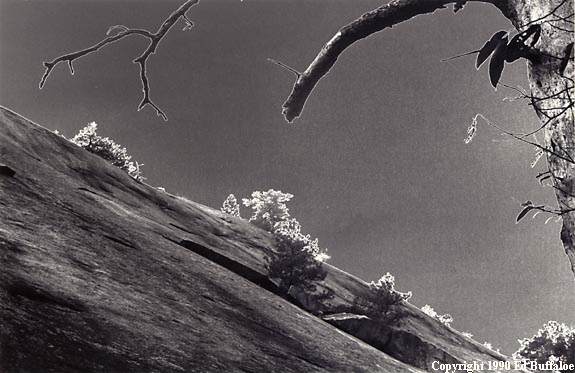|
[Controls in Black and White Photography, Significant Form]

Context: There is a scene before the artist (photographer).
Problem: How to compose the work (photograph).
Factors:
- Certain natural forms (plant shapes, leaf distribution, seed distribution in flowering heads, crystalline structures, stellar and galactic clusters, etc.)
emerge from natural numeric ratios and patterns.
- Forms based on these ratios and patterns or which are similar to, or variations of, them are most pleasing to the human aesthetic—they make
us “feel good.” They have what Christopher Alexander calls “quality without a name.”
- “The basic concept [theory of art] is the articulate but non-discursive form having import without conventional reference, and therefore presenting
itself not as a symbol in the ordinary sense, but as a “significant form,” in which the factor of significance is not logically discriminated, but is felt as a quality rather than recognized as a function.” (Susanne K. Langer, Feeling and Form, p.32)
- “It has long been known that a peculiar series of numbers is connected with the phenomenon of the orderly distribution of the leaves of plants.
The series is: 1, 2, 3, 5, 8, 13, 21, 34, 55, 89, 144, etc. This is called a summation series from the fact that each term is composed of the sum of
the two preceding terms. From this series we obtain the entire structure of dynamic symmetry…” (Jay Hambidge, The Elements of Dynamic
Symmetry, p. 3)
- Since art may convey feelings that are disturbing as well as pleasing, disjunctive and inharmonious patterns may be employed for artistic effect.
- Mere copying of nature is not necessarily art. But the best and most pleasing art seems to be in harmony with natural patterns and forms.
- See also Henry Peach Robinson, Pictorial Effect in Photography for
information on composition.
Solution: When composing a work, make use of natural forms, ratios and numeric patterns, or variations thereof. Live, work, create and compose in harmony with natural patterns and forms.
|
|

